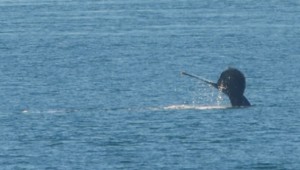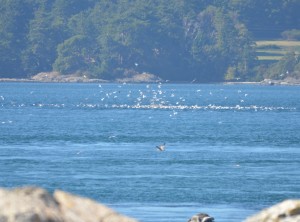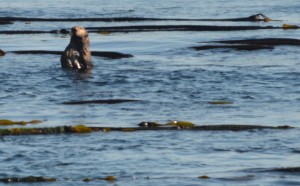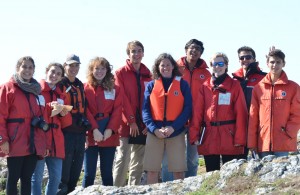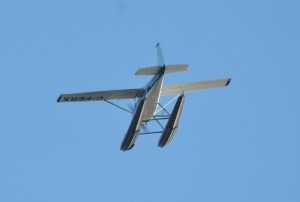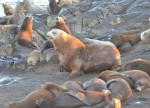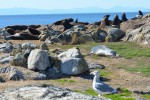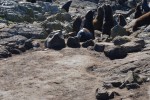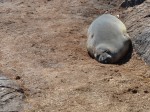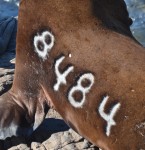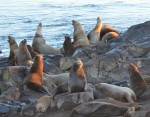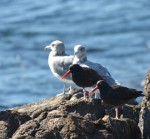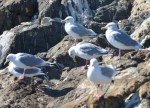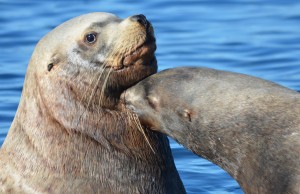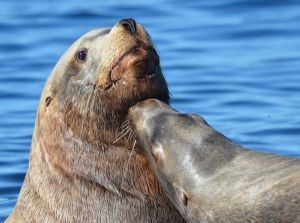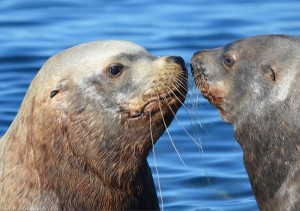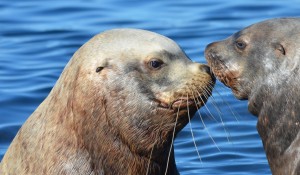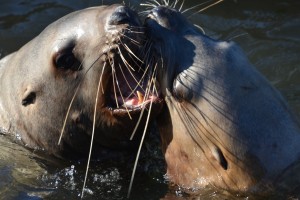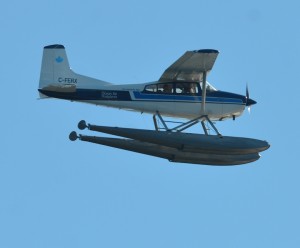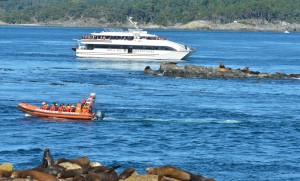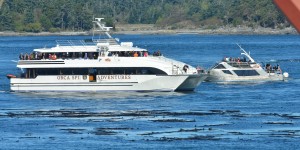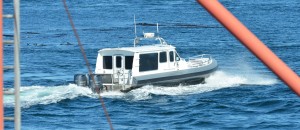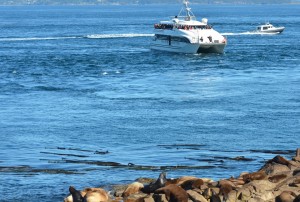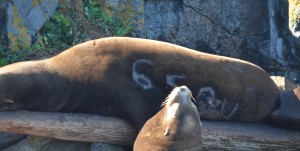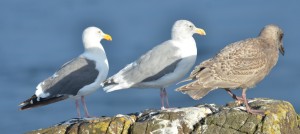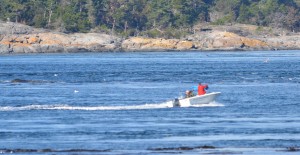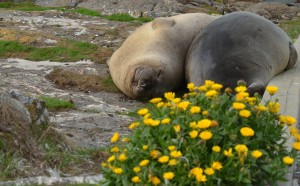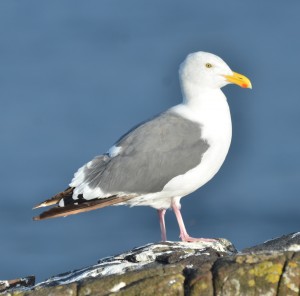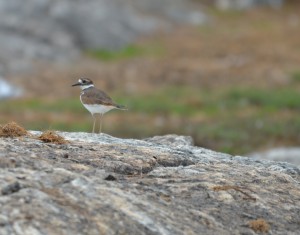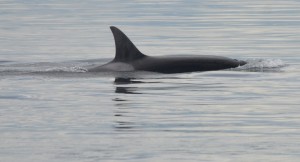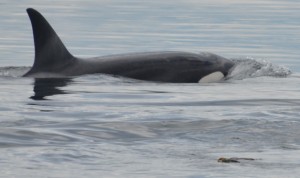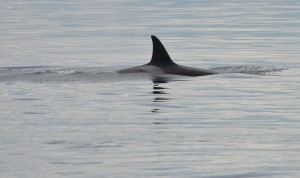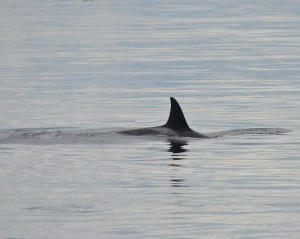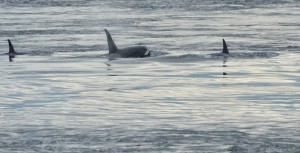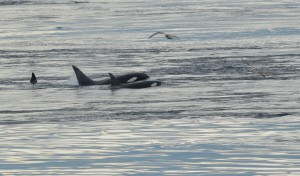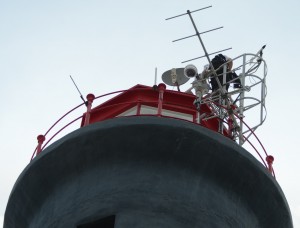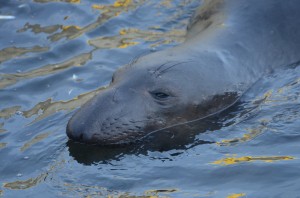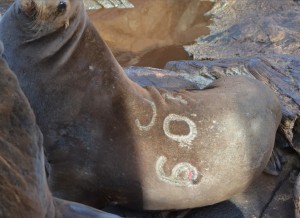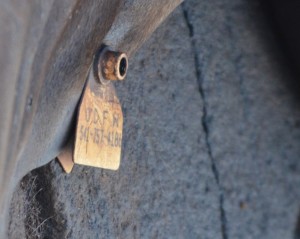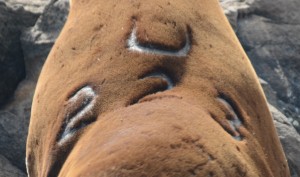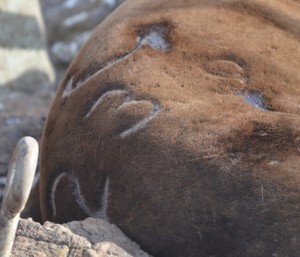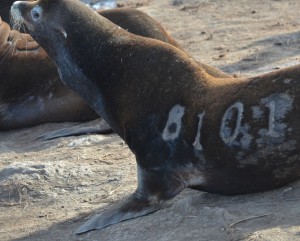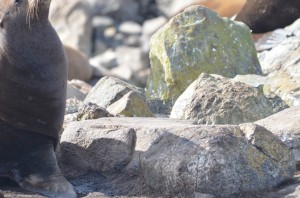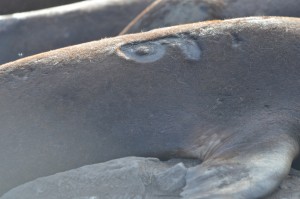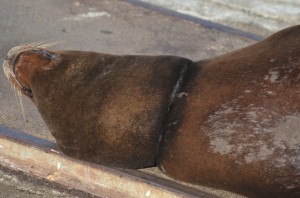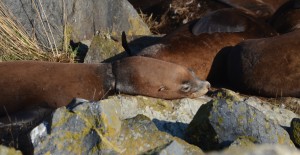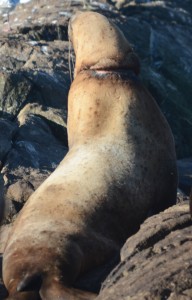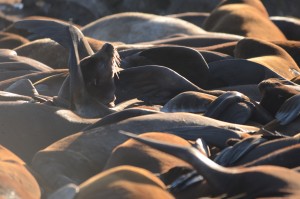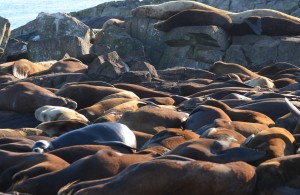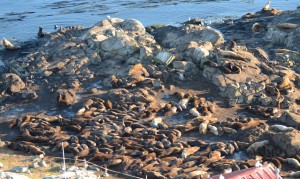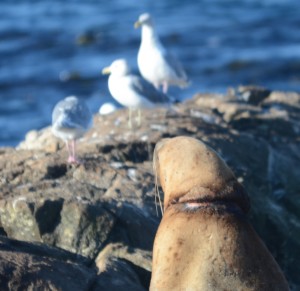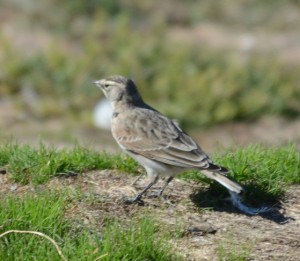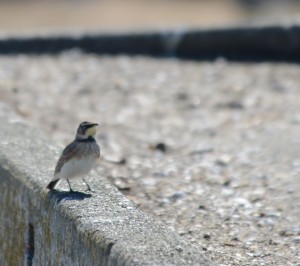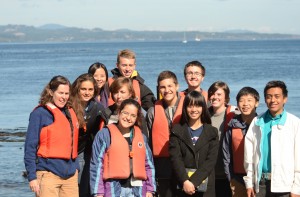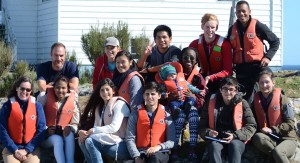Early fog crept over from the American side, obliterating visibility for a few hours this morning but then it was cleared by west winds of 10 – 20 knots. The wind was constant, as was the sunshine for the rest of the day. The barometer started rising last night and peaked at 1014 hPa before starting to drop again this afternoon. Tomorrow’s forecast includes strong wind warnings for afternoon westerlies of 15 – 25 knots, it is supposed to be mainly sunny while Friday has a 60% chance of showers.
There was a near-miss boating incident this morning just after the fog cleared. During the full ebb current, of close to six knots, a small rough looking commercial fishing vessel with lots of bumpers out and a ‘scotchman’ astern went flying through Middle Channel. Just as it arrived at the roughest section where the standing waves were standing high, it turned abruptly at right angles to the current. It rolled and seemed to take a long time to right itself. Then as I watched from the roof of the energy building, it lurched around, finally straightening out like a drunken sailor making its way westward. Six whale watching vessels were noted, working in the Race Rocks Ecological Reserve today, all very professional, heeding sustainability methods and best practices except for one orange zodiac that was in a hurry to leave when the Navy arrived on scene just west of the reserve.
A Humpback Whale was feeding just to the west of the reserve all afternoon and the students were able to observe it through the spotting scope and time the dives. Some of them managed to sketch the blow shape in their field journals and a few even caught glimpses of the flukes. They also had a chance to observe the sea otter and that was a highlight amidst the roar and din of the ubiquitous sea lions and their stinky ways. Two young male Northern Elephant Seals took advantage of the chaos when the students were coming ashore to sneak up the ramp and they put on a good demonstration of elephant seal wrestling and jousting in between their sudden naps.
The field trip was the third marine science class to visit in a week and it was really a treat to work with such wonderful young people from all over the world.
Chores were routine in addition to end of the month routines.
- Laura and students reflecting on Race Rocks.
- Humpback Whale diving just off of West Rocks.
- Multi-species feeding flock in vicinity of feeding Humpback whale and big strings of Common Murres.
- Sea Otter has a good sense of smell and must have been able to smell us over the overwhelming eau de sea lion.
- This lone male sea otter has several favourite kelp beds.
- Another successful field trip to Race Rocks, an important part of becoming ocean literate at Pearson College.
- Overflight


